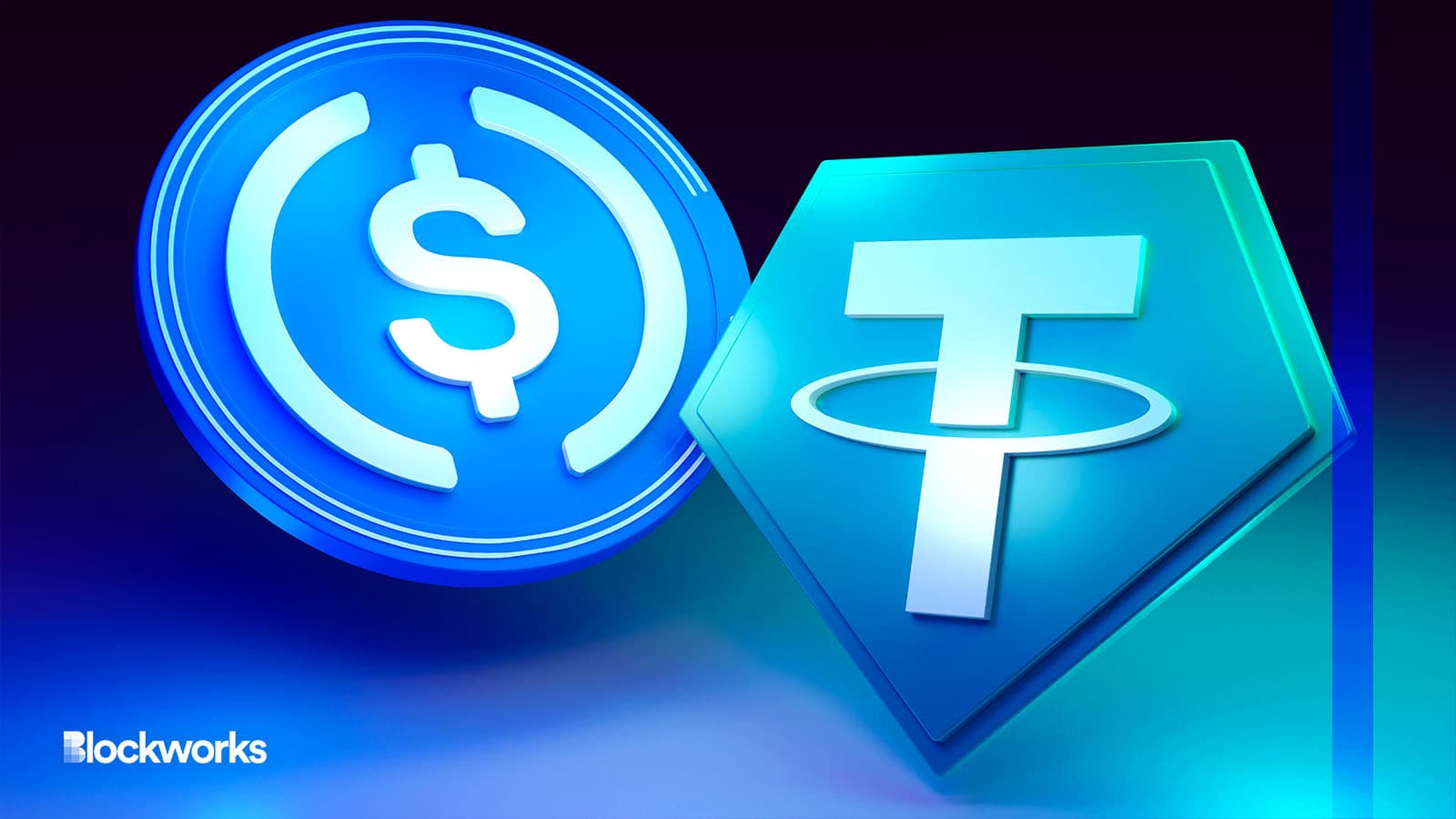US Crypto Crackdown Sees USDC Lose $10B, Tether Gain $9B
Stablecoins have shifted dramatically in a hectic month for crypto, with offshore-banked Tether gaining almost as much as Circle has lost

Source: Shutterstock / CryptoFX, modified by Blockworks
Tether stablecoin USDT is enjoying a near two-year high in market share amid heightened regulatory fears across crypto, after Circle’s USDC shed almost $10 billion.
Since USDC de-pegged earlier this month in the aftermath of Silicon Valley Bank’s closure, where Boston-headquartered issuer Circle held $3.3 billion in reserves, traders took a step back from the stablecoin.
USDC’s market cap is down more than 5% over the past week and more than 24% over the past month, according to data compiled by Blockworks, representing $9.7 billion in reduced supply.
USDT’s market cap, by comparison, has gained nearly $9 billion, or about 12%, since the end of February.
Stablecoin issuers generally burn supply when processing cash redemptions, especially when there’s little demand for those tokens to be recirculated to other customers. When demand increases, they increase the supply by minting new stablecoins to distribute.
“The crypto community has become leery about anti-crypto sentiment in the US. As such, the censorship risk around USDC raises some concerns for those with a more libertarian bent in the community,” Darius Tabatabai, co-founder at decentralized exchange Vertex Protocol.
“That has pushed a number of users towards Tether, which is deemed to have less risk in this regard.” Tether’s parent company iFinex is headquartered in Hong Kong and its asset treasuries are managed in banks across the Bahamas.
Regulatory concerns and enforcement actions have driven liquidity in stablecoin markets lower, Tabatabai added.
“These matters have weakened liquidity and increased volatility, and pushed a number of crypto participants to heavier weightings of BTC and ETH and other tokens,” Tabatabai said. “We believe this may have contributed to recent rallies in prices.”
Tether set to make big bucks
The issue goes beyond just regulation, though. The macroeconomic condition surrounding banks and the current crisis is playing into the current stablecoin landscape as well, Noelle Acheson, author of Crypto is Macro Now and former head of market insights at Genesis, said.
“The real battle isn’t between digital asset investors and regulators but between banks and stablecoin issuers,” Acheson said. “Stablecoin issuers still depend on banks to keep their reserves, and banks have been very resistant to help a sector that is trying to put them out of business — which, of course, makes sense.”
Stablecoin issuers have benefited from higher interest rates for the past year, Acheson added.
Tether technology chief Paolo Ardoino estimates the company is set to book a $700 million profit in the first quarter, Bloomberg reported. This will be in addition to the $700 million Tether already added to its reserves via net profits during the fourth quarter of 2022, the company said last month.
Acheson said: “The very heart of the problem is that rising rates is great for stablecoin issuers since they keep all of the interest income themselves and pass none of it on to token holders, whereas rising rates cause a real problem for banks who lose depositors when they don’t pass along the interest, and also become underwater on their longer-term loans.”
Updated Mar. 31, 2023 at 6:07 pm ET: Corrected date.
Get the news in your inbox. Explore Blockworks newsletters:
- The Breakdown: Decoding crypto and the markets. Daily.
- 0xResearch: Alpha in your inbox. Think like an analyst.






